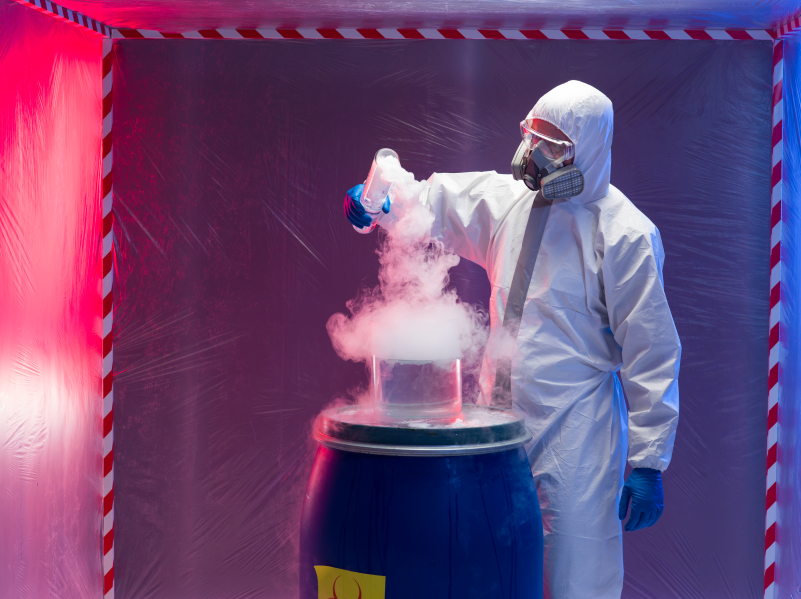
|
All workers who are exposed to hazardous chemicals on the job must be trained to protect themselves (and their families) from exposure to these chemicals. First, we will look at three basic instructions all workers should be trained to adhere to, and then we will follow up with a dozen additional measures workers can take to protect themselves from chemical exposure.
A Worker’s Trinity to Prevent Chemical Exposure
If your job involves contact with hazardous chemicals and materials, there are three basic things you can do to reduce your exposure.
- Read and follow instructions provided by your employer.
- If you come into contact with dust, fibers, chemical fumes, radiation, or biologic agents on your job, ask for and wear all required personal protective equipment (PPE), such as gloves, masks, coveralls, and respirators.
- Shower or change clothes before leaving work. Otherwise, you can carry contaminants home from work on your clothing.
Polychlorinated biphenyls (PCBs) in building material are in the news everyday. The potential health risk and liability make them a widespread concern of EH&S staff, employees, building owners and construction. Download Now
A Dozen Additional Measures to Remember
Although different types of chemicals require different handling, there are some basic safety rules that apply to the handling of all hazardous chemicals.
- Be cautious and plan ahead. Know what could go wrong with the particular chemicals you are handling and what you would do in case of an accident.
- Always use the required PPE and inspect it before each use to make sure it is in prime operating condition.
- Inspect containers to make sure they are properly labeled, that the material in the container is appropriate for that container, and that the container is not damaged. If there are any indications otherwise, don’t use the material.
- Report damaged containers or illegible labels immediately.
- Read the label and safety data sheet (SDS) before using any material so that you understand the hazards and precautions to take.
In this free guide you will learn best management practices to help you easily navigate through the world of PCBs. Download now!
- If it is necessary to identify a material, read the label, refer to the SDS, or take a sample for analysis. There have been instances where workers were hurt by tasting or smelling a material to try to identify it.
- Use materials only for their intended purpose.
- Don’t eat or drink while handling hazardous materials.
- Be familiar with emergency procedures and equipment, including evacuation procedures, emergency reporting procedures, and procedures for fires or spills.
- Store all materials properly in ventilated, dry, cool areas.
- Separate incompatible materials.
- Clean work surfaces at least once during a work shift to minimize contamination risks.
